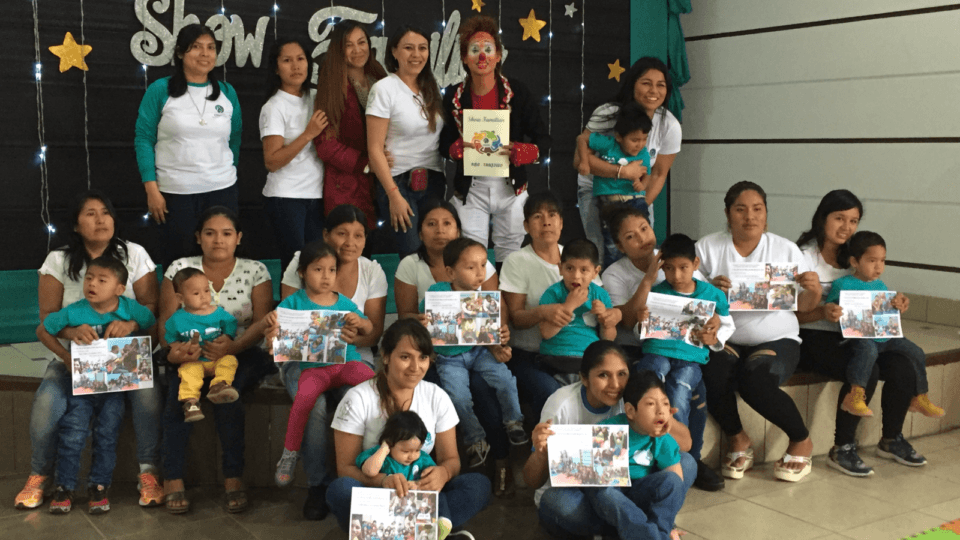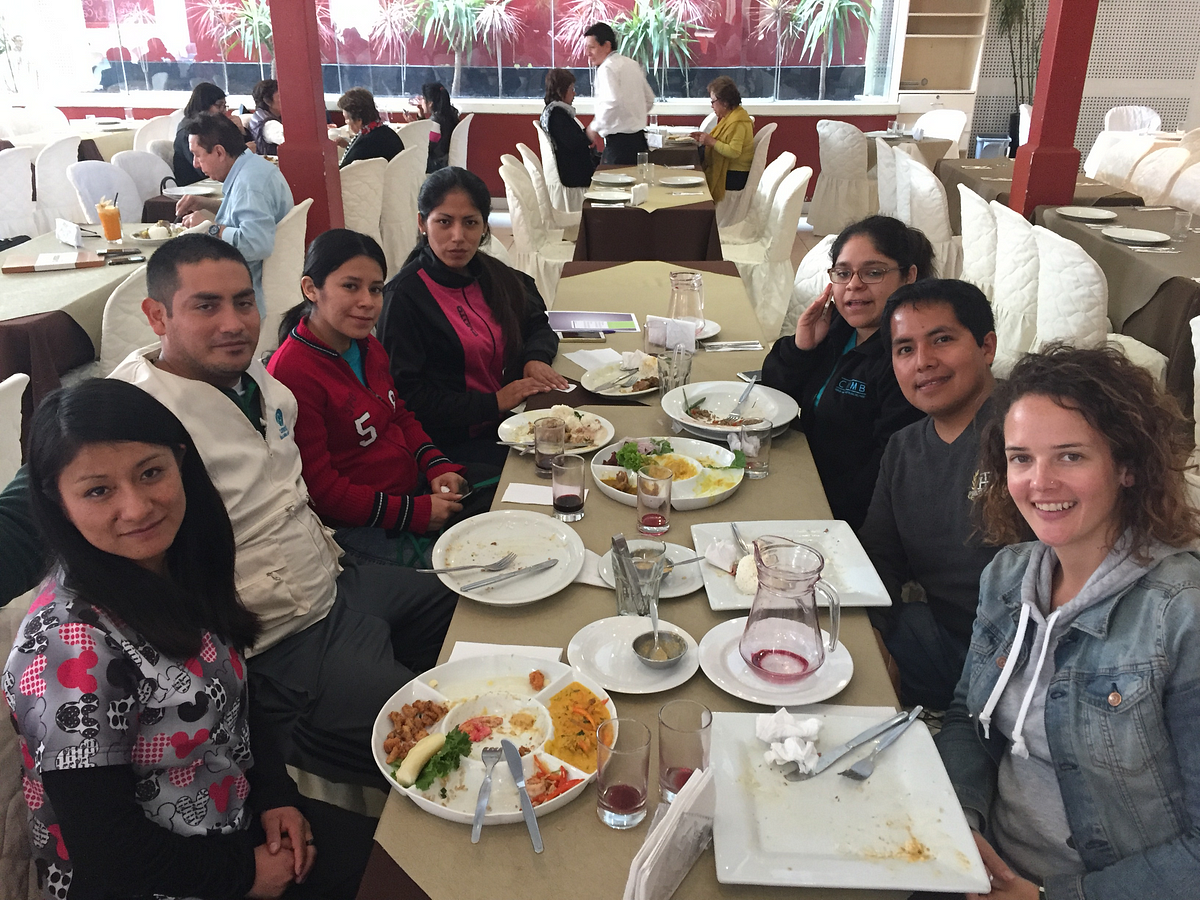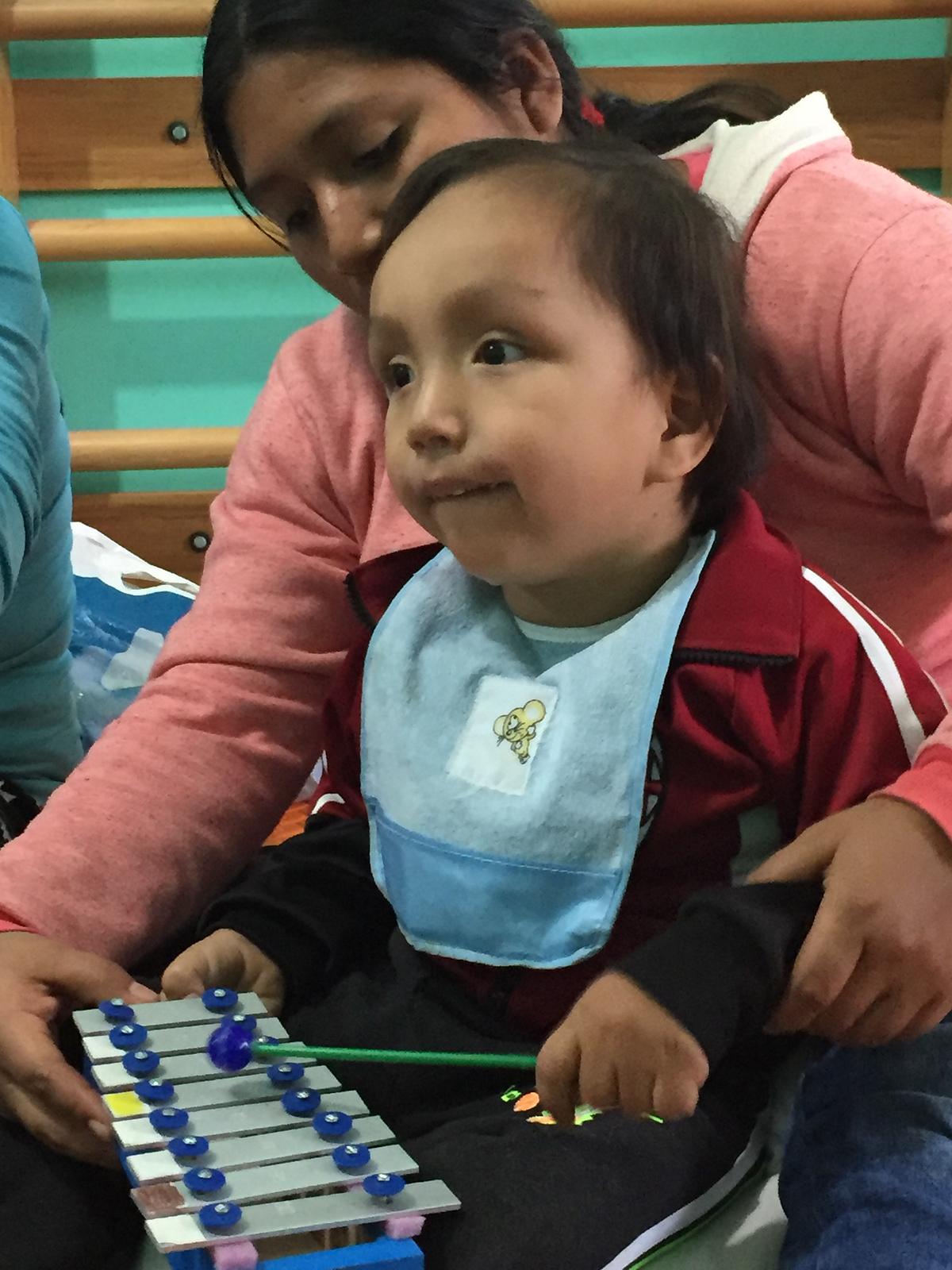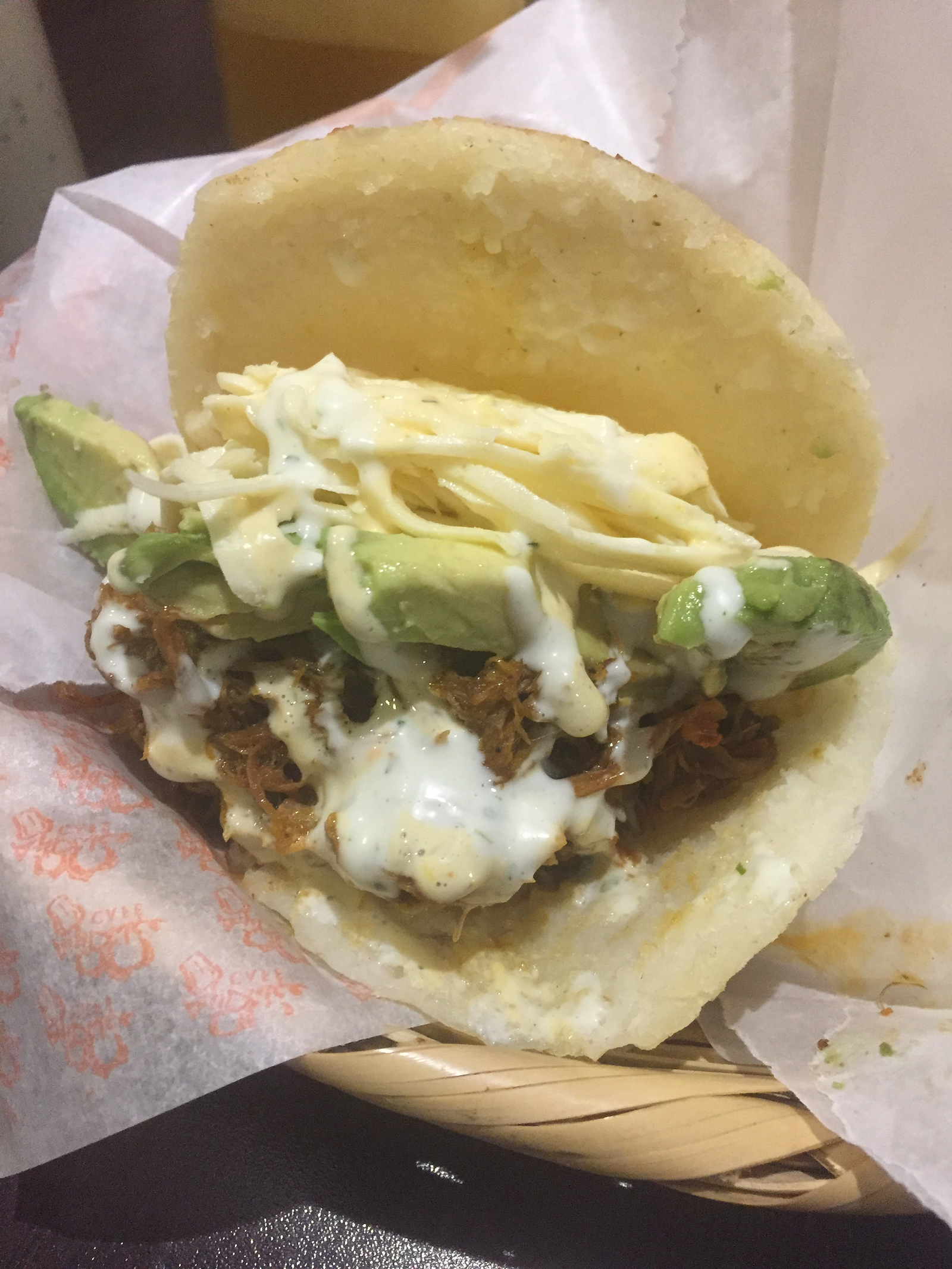Alpaca Bag-Como se dice? News from International Volunteer in Peru

Before coming to Peru, I would have felt confident tell you that I was more or less fluent in Spanish. I know the grammar, much of the vocabulary, and have conversations using Spanish with little problem. Back in the US, approximately 80 percent of my patients and their parents spoke to me in Spanish. I was speaking Spanish every day. I figured that coming to Peru would be easy with respect to the language.
But language fluency is a funny thing. On my first day in the CMMB office, surrounded by seven native Spanish speakers, talking (or occasionally yelling) over each other (in a loving way of course), using jokes, idioms, and slang, and playing music in the background, and you have a very confused American girl!
Now to be fair to all my Spanish language teachers, during these interactions, I understood the jist of what was being said, but it was a lot to take in. When someone told a joke or used slang, it was almost like learning a whole new language.
Peru does a great job at making my head spin, as there are so many ‘Peruvianisms’ to learn. For example: a girlfriend isn’t usually referred to as novia. Instead there are several options. A girlfriend might be called:
- Enamorada (literally translated to lover more or less),
- Costilla (literally translated to rib bone), or
- Flaca (skinny girl).
So you can see how one might be confused – especially when you think someone is telling you that they went dancing with their rib bones last night!

My Peruvian friends (proyecto mil dias) who are ever so patient with my Spanish
Peruvians also have a way of being vague yet direct at the same time when they speak (again, head spinning kind of stuff). They’re very honest, but at the same time, it can take some detective work to figure out what they’re talking about. If you ask for directions, you won’t get street names, but instead you are likely to hear something like this:
“Go to the third tree, make a right, walk a little more, and make a left after the store where the dog sits outside.”
At first, it was difficult to understand, but I’ve found that it works for Peruvians and is part of the culture here (obviously it must work, otherwise everyone would be walking around aimlessly looking for a dog sitting outside of a little store).
The Learning Continues
As I continue my journey here in Trujillo, I find myself learning more and more. It’s interesting how I’m learning this new kind of Spanish indirectly. Up until this point, I’ve mostly learned Spanish directly – through direct instruction at school, by looking words up in the dictionary, through direct translation etc. However, I now rarely look words up in the dictionary. Instead I them learn through context. I have absolutely no idea what the word “ficha” literally translates to, but I use it because I know what it is in context. I also sometimes find myself thinking in Spanish, because it’s easier. If I go to the market, it’s easier for me to make a list of what I need in Spanish because if I make the list in English, I have to translate it once I get there. If I think and write my list in Spanish, the hard work is done before I get there. As I’ve become more comfortable, I’ve started to joke around in Spanish and people actually laugh, so I figure I am getting it right (that or they are laughing at me?)!
Life is moving right along here in Trujillo. I’ve been here for about 3 months now, which is hard to believe. It has been a challenge, especially being here by myself. The most difficult thing about being by myself isn’t living by myself (because in my old age I am actually starting to enjoy living alone) but rather, meeting people and making friends.
Luckily, I’ve gotten to know some locals as well as other expats living in the area. There are quite a few NGOs in Trujillo and Huanchaco that elicit the help of volunteers for their services. Most of the volunteers are here for a short time, a few months, but their organizations often host events and trips that I join. In this way, I’ve met a few people who I have become friendly with. That helps a lot.
The People I Serve
My kids are doing well in therapy. I see one little boy named Leandro (who is just a little ham). Every time he sees me, he stares at me for about five seconds as if he’s never seen me before in his life. Once I turn to walk away, he extends his hands to get my attention. The other therapists tell me that he loves the extranjeros (foreigners). I think he likes me because I do feeding therapy with him, and this kid really likes to eat!

Leandro and his mom during musical therapy.
Last week, we celebrated El día de la familia (the day of the family). We hosted the event to celebrate all our CMMB families and to have the chance to spend time together outside of therapy.
When we see our kids in therapy, they are usually with their primary caretaker (mother, grandmother, aunt). But this celebration allows us to interact on a different, less formal level. It allows entire families to show off their creativity.
The children from the music class performed what they had learned with the support of their mothers. This was followed by performance from each family adorned with adorable costumes.
It was a nice way to spend time with the families outside of therapy. I’ve realized that if you look closely, the caretakers are always doing something therapeutic for their child; things that they have been taught by the therapists, whether it’s using a strategy for feeding, or taking advantage of a situation to teach a new word. These mothers and caretakers are making such a difference in their children’s lives.
They truly are angels. I feel lucky to be part of this community.

Dia de la familia
And finally, on this week’s edition of the best thing I’ve eaten all week:
A Venezuelan arepa filled with meat, cheese, and guacamole. Too good not to share.

The current love of my life
Thanks for reading! Until next time.